3 Unique Memory Games for Kids
Memory games are a great brain boosting activity for growing minds that will help build your child’s concentration.
Those growing brains are working hard and providing a stimulating game to challenge them in fun ways will keep them engaged while exercising their mind in important ways. Preschoolers and school aged children alike have so many areas of their lives that require a good memory, whether its following rules in the house or needing to remember math, science, or history information for school, helping children develop good memory skills early will help enormously as they grow and learn throughout every stage.
Not only that, but it’s another screen-free tool in your parenting tool belt that you can pull out when you need to help your kids fight boredom!
The important thing to remember is to play a game that your kid finds enjoyable, (and hey, if you can enjoy it too, then that’s a double bonus!) Kids learn better when having fun, so here are three unique games that use memory mechanics in fun ways that will have everyone wanting to play them again and again!
CHICKEN CHA CHA CHA
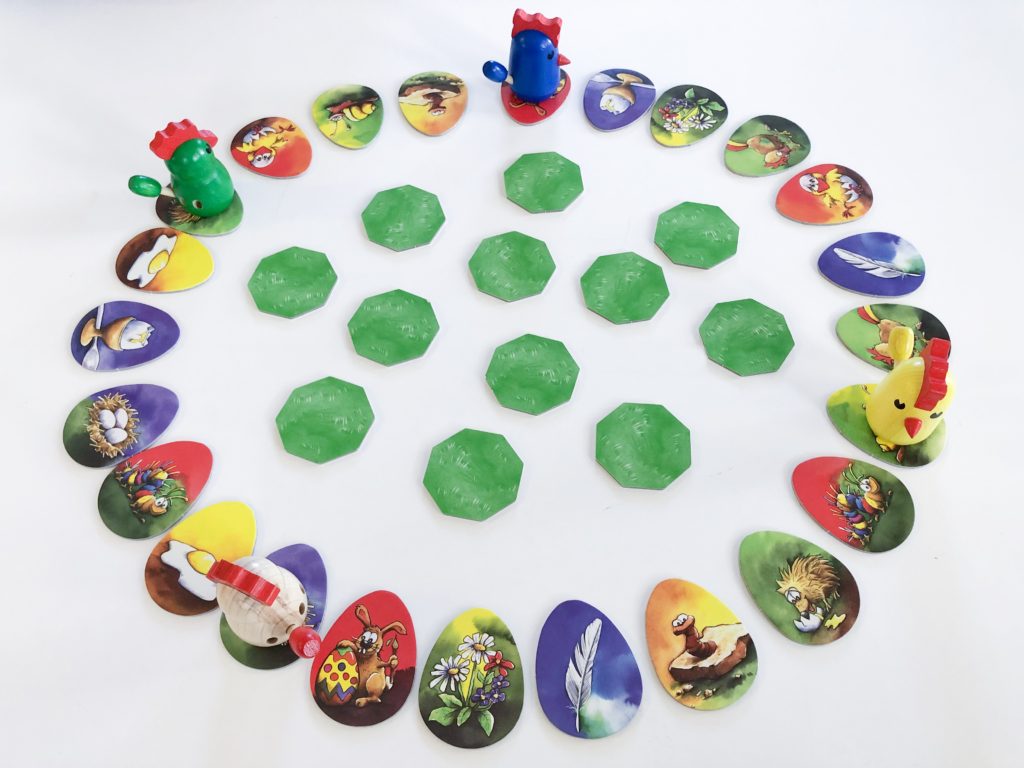
This game is a unique, easily scalable memory game that is sure to delight your younger preschool players!
You all play as chickens practicing for the chicken cha cha olympics! You’ll hop around the yard and attempt to steal the tail feathers of your fellow chickens. The first to get all the tail feathers from the other chickens wins the game!
The chicken yard is made up of an outer ring of egg shaped tiles, each featuring an illustration that matches to one of the octagonal yard tiles in the center of the ring. In order to move your chicken forward, you have to match the image on the space in front of you with the yard tile by flipping it over to view the illustration underneath. If you match correctly, you get to cha cha one space forward and go again. If you are unsuccessful in creating a match, you must stop and wait for your next turn.
So rather than making a match and collecting the pieces as is typical in traditional matching games, you have to remember the location of the images under the octagonal tiles throughout the game in order to move your chickens. In theory, as the game progresses this should get easier and easier for everyone to do as the illustrations are being revealed again and again. However, it keeps the game tricky because your options stay the same as you never remove matched yard/egg tiles.
When you hop over an opponent by successfully making a match, you’ll take their tail feather and add it to your chicken. Don’t worry though, there is no player elimination in this game! Even if you’ve lost your tail feather you are still in the game and able to snatch it back, along with any other tail feathers you might snag along the way. I love this aspect because even though there is a technical winner if someone gets all of the tail feathers, everyone is able to play throughout the whole game which helps keep things friendly and fun.
Scalability is KEY!
My favorite part about Chicken Cha Cha Cha however is how easily scalable the game is. There are 12 different yard tiles with illustrations that players need to match. Yet, if you are playing with a younger group, all you have to do to scale the game down is simply reduce the number of yard tiles that you place out into the center, removing the two corresponding egg tiles as well.
You can play around and adjust the number of tiles to see how many is the right amount for your kids. For example, our three year old plays with just 6 yard tiles. While we want him to be challenged and concentrate, it’s even more important that he has a feeling of success rather than constant failure. Playing only with the amount of tiles that he can remember helps him stay motivated and willing to play.
Another way to adjust the difficulty of this game is how you place the yard tiles in the center. You can place them in a random layout, or you can place them in more of a grid position so that the placements are easier to remember.
With great wooden pieces, sturdy tiles, and wonderful scalability, Chicken Cha Cha Cha is a game sure to grow with your kids and last them a good few years!
MEMOARRR!
For kids around age 6 and up, MEMOARRR! is another fantastic modern memory game option.
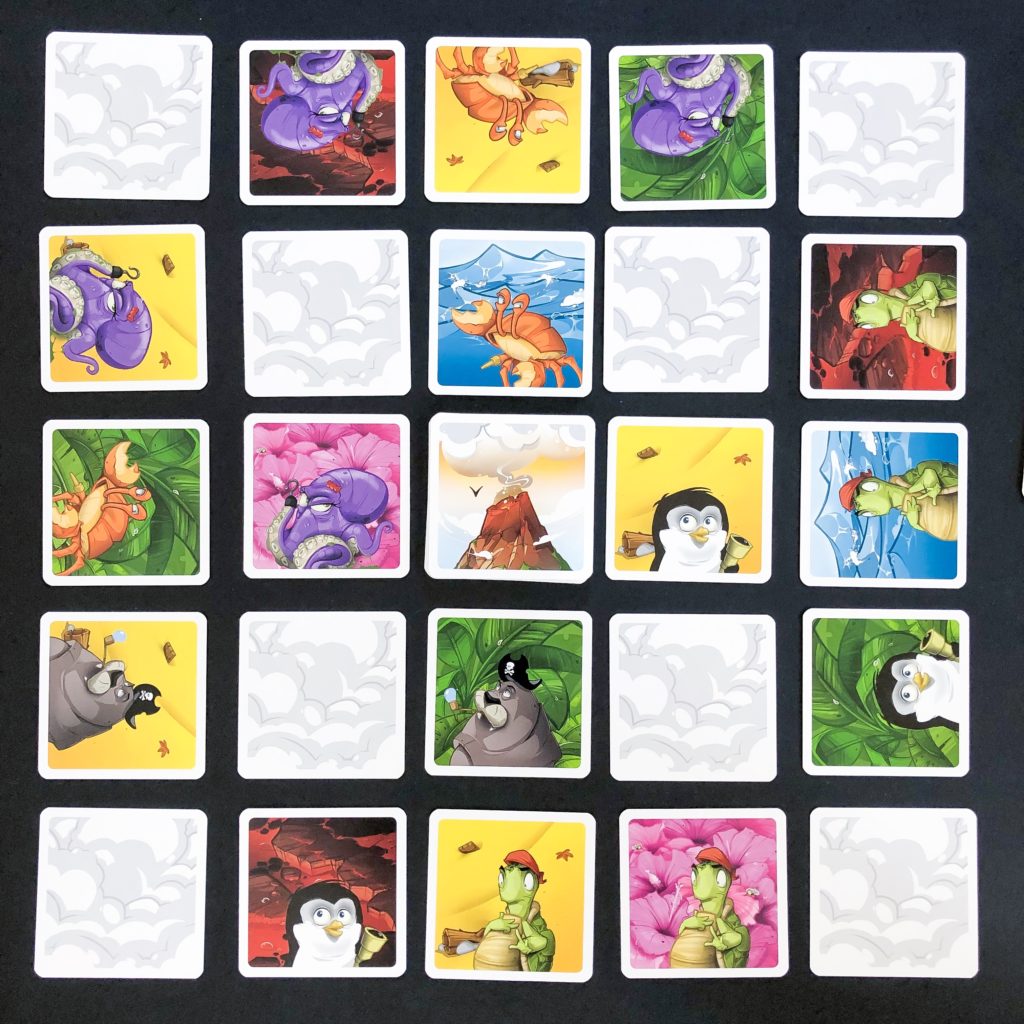
You’ll have to try and make your escape off the Island of Captain Goldfish before the Volcano erupts and the lava swallows you up in this pirate game for 2 to 4 players.
The cards in MEMOARRR! all feature various locations with different animals on them. You’ll use these cards to set up a 5×5 grid with the center cards being a pile of face down treasure chests and volcano cards. On your turn you’ll reveal one location card, hoping to connect it to the last location discovered. A card is considered connected if both cards either show the same animal or the same landscape. If they are not connected, you are eliminated from the round. The last remaining player in the round takes one treasure card, then all of the revealed cards are turned face down to start the next round.
The cards themselves never change positions for the duration of the game, allowing players to memorize them from round to round in an effort to get more treasure than the other players.
I love that there are two ways to match cards: animal or landscape. The animals are each distinctive and adorably drawn so as to be unique and memorable. The landscapes in the background of the cards are also bright, colorful, and memorable. You may not remember where one type of landscape is, but you may remember where the animal featured on the card is. With there being two ways to match, it means that kids have a good chance of making a connection, even if its through luck. Sometimes it can get discouraging when you can’t find a match, by having two ways to make a connection, and the cards not moving from round to round, MEMOARRR! helps limit the frustration for younger players and keeps the game fun.
Another great aspect to this game is how each player is allowed to look at the middle three cards nearest to them before the round begins. This gives kids (and adults!) the chance to have a little bit of inside knowledge and confidence to make those early matches. This again limits the frustration for kids without giving them a free pass. They still have to remember what cards are in front of them, but they’ve got a little bit of a leg up to get the game going.
This is another scalable game as well. Once everyone has a good feel for the memory aspect, you can play with the expert rules which gives the animals all different abilities that are able to be utilized by a player who makes a successful connection between two cards on their turn.
This adds a layer of strategy that really helps the game grow not just with kids, but also for adults! You’ll have to decide which animal is better for you to make a connection with so you can use the ability, if you can remember where those animals are that is!
All this makes MEMOARRR! a great game well worth checking out!
The Magic Labyrinth
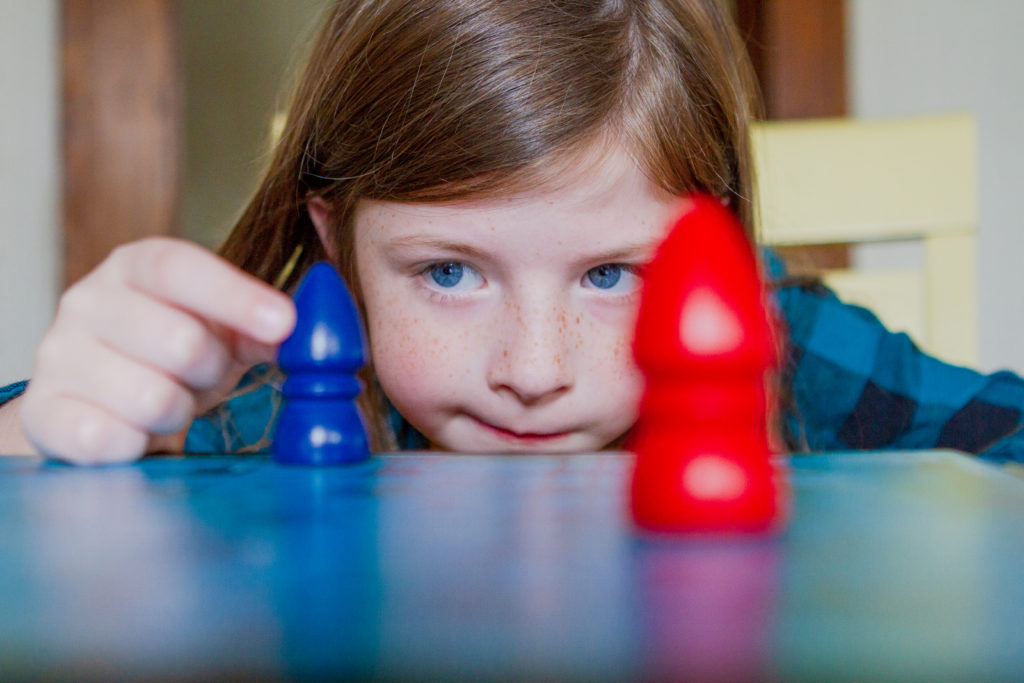
This one is truly a non traditional memory game pick and also one of our family’s favorites! Rather than needing to flip over cards and make matches, in The Magic Labyrinth, players need to memorize a hidden path through the labyrinth so they can collect magic symbols from the maze. The first person to collect five symbols wins!
While some Labyrinth games have the path visible on the top and players need to slide the paths around, The Magic Labyrinth has a hidden path below the board. Players will move a magnetized player piece attached to a ball that is underneath the board, navigating it around the invisible walls that reside just below the surface in search of magic symbols. If the player runs into the walls, their ball will drop, disconnecting from their player piece and they will have to start over from their starting corner on their next turn.
Memorizing where the invisible walls are on the path is trickier than it seems and can sometimes be frustrating. The need to persevere in this game, even after running into the walls (sometimes the same wall) again and again makes this a fantastic choice for the family to play and work through.
The path is set up using little modular wooden walls that you place into the base of the box before putting the game board on top. So you can choose to make the maze highly difficult, using all the wall pieces, or you can make the maze a little more manageable, using less. I highly recommend starting with an easier maze to get the feel for it, then adding more and more wall pieces as you get better at the game.
If you like the sound of The Magic Labyrinth but are more of a cooperative player check out the new Luxantis for a similar labyrinth game experience.
Use What You Have!
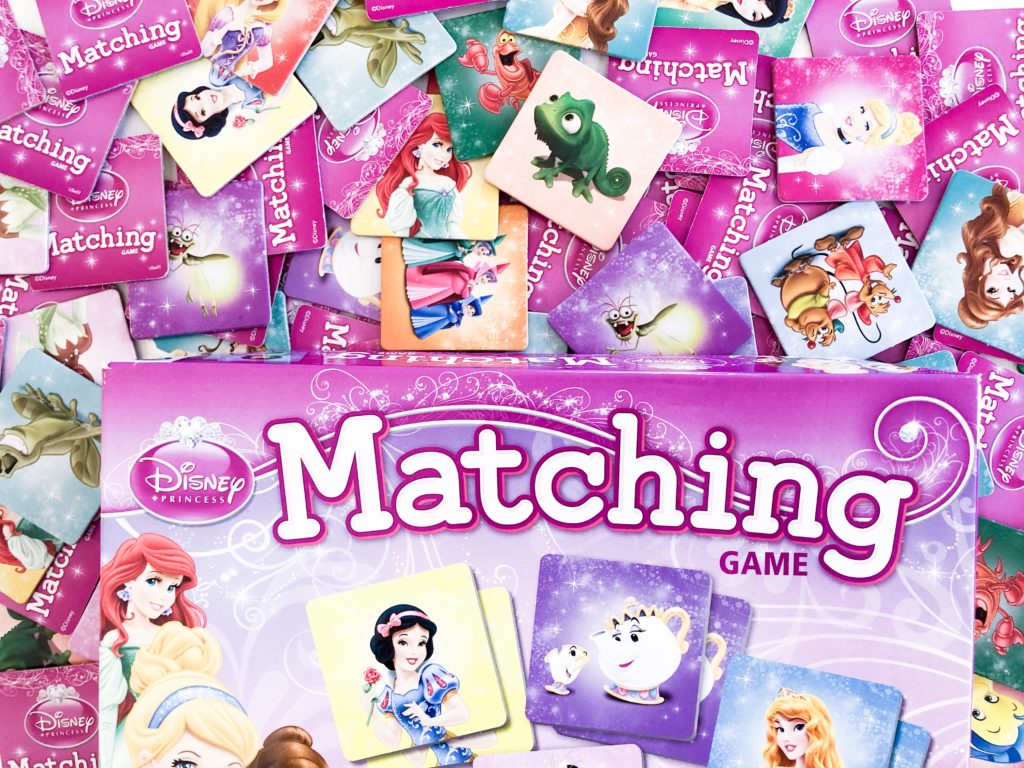
While the above three games are fantastic options, you can start today even with some simple games or items you may already have in your house!
Many homes have traditional memory games on their game shelves, these are just fine! If you have a kid who is really character motivated, getting one of the traditional character matching games is still a great option! We have a Disney Princess one that our daughter used for years that we are still known to pull out from time to time.
Our boys are very interested in animals, especially dogs and they love using the Canine Chaos card game for memory matching.
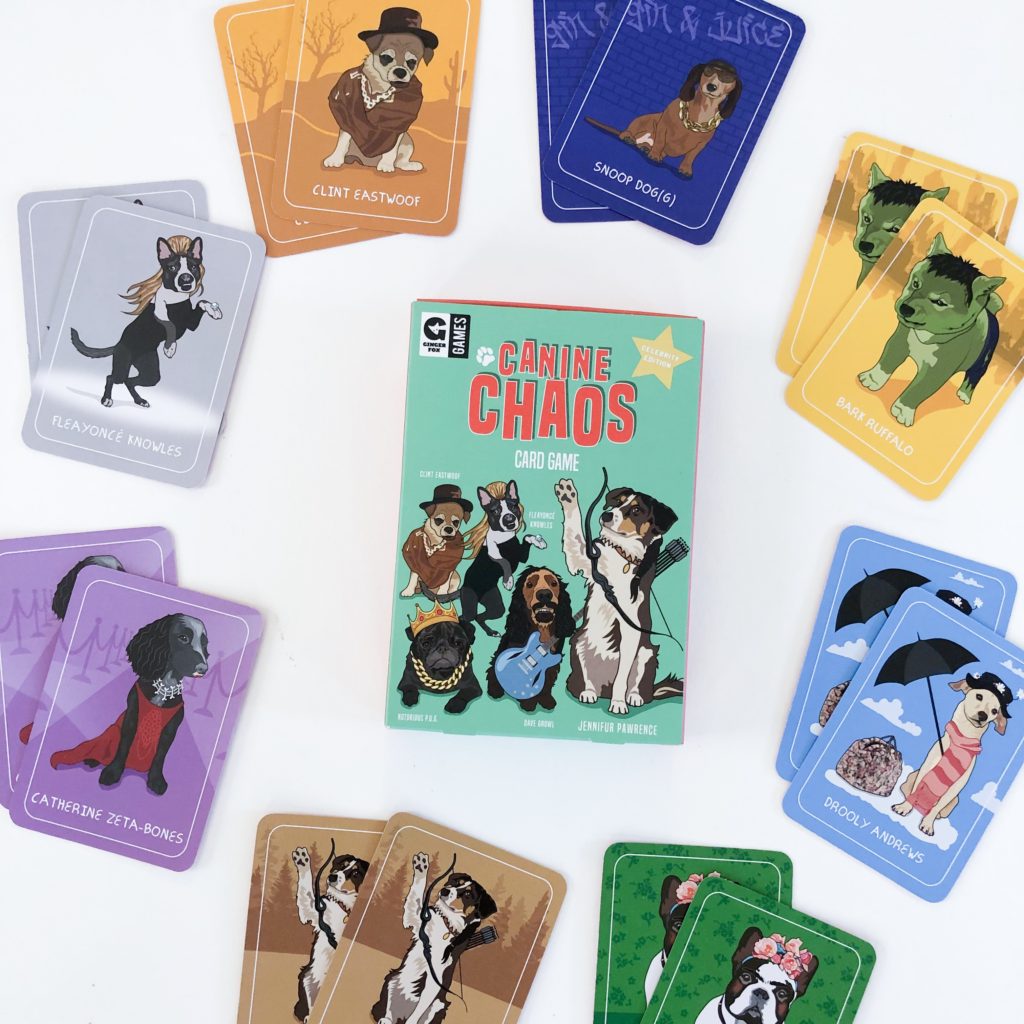
While not a memory game itself, the cards feature adorable illustrations of “celebrity” dogs on highly colorful cards, making them easy to remember as each is distinct from the other and has a perfect match. We take out a handful of pairs of dogs that the kids want to match and then shuffle them up and deal them out in a grid on the table face down like a traditional memory game.
Any card game with highly recognizable images and matching pairs will work. You can even use a standard deck of cards, though the fun illustrations of Canine Chaos are what keeps our boys engaged. We love when a game can pull double duty, going from memory matching fun one minute to card-swapping craziness the next.
Don’t have anything like that? No worries! Just grab some index cards and use crayons to mark matching sets to make your own game!
Start Playing Memory Games with your Child Now!
Developing good memory skills will help make learning easier for kids. Helping them strengthen their focus and concentration is incredibly important. No matter what game you decide is right for your family, playing memory games will greatly benefit your child, helping them become a more successful learner through play.
* This post contains affiliate links at no cost to you. To read my full disclosure policy click here.*


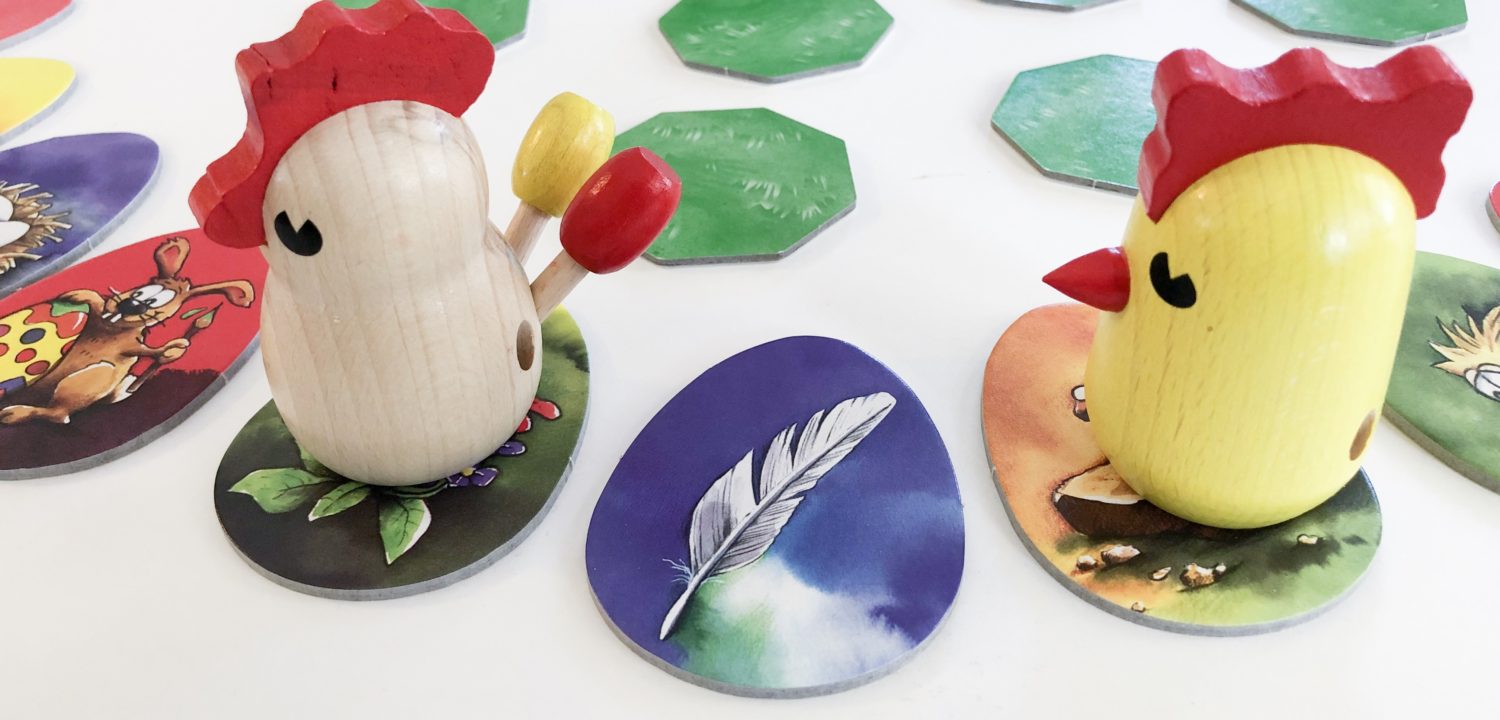
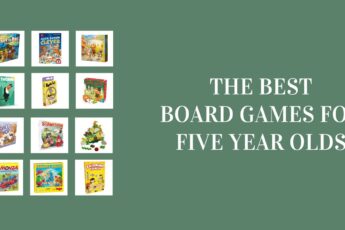
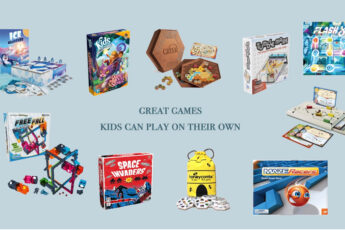




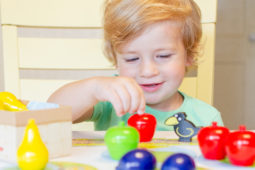
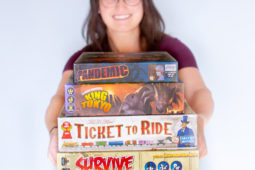
Leave a Comment